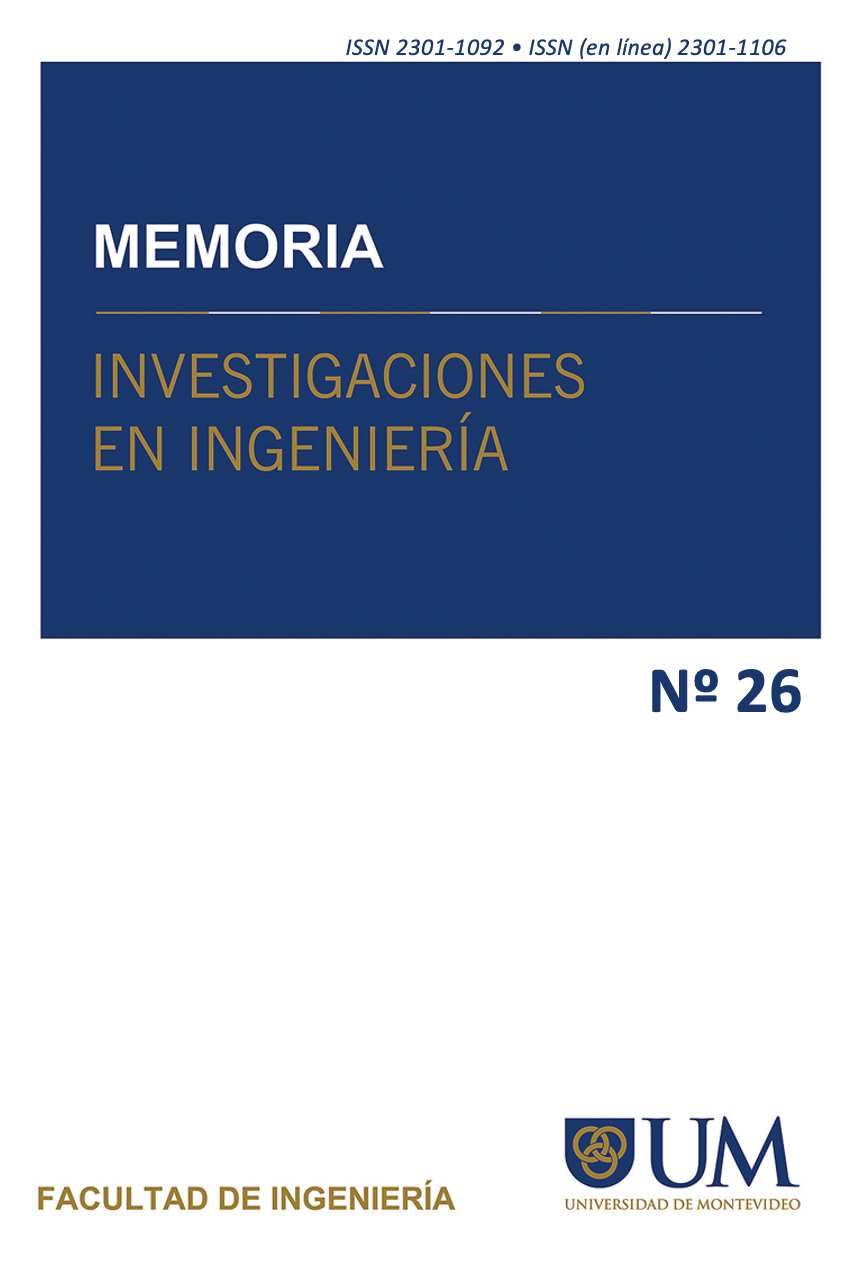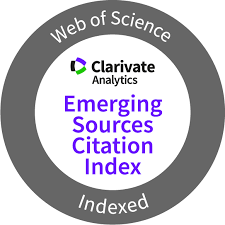Use of Phase Change Material to enhance the Effectiveness of the Photovoltaic Module
DOI:
https://doi.org/10.36561/ING.26.6Keywords:
Photovoltaics, Solar irradiance, Cell temperature, Phase change material, Solar EnergyAbstract
The usefulness and productivity of photovoltaic (PV) panels are significantly impacted by ambient and operating temperatures. However, the negative influence of hot climates on PV panel performance can be mitigated through innovative cooling techniques. This research work aims to investigate the implementation of phase change material (PCM) on the backside of solar modules to reduce panel temperature and enhance energy production. A hybrid system utilizing soy wax for cooling is applied to the rear of the panel. Comparative data have been collected on various days, and the outcomes have been analyzed. The outcomes reveal that the usage of phase change material reduced panel temperature by up to 18°C, causing a 10.89% rise in electricity generation compared to panels without cooling systems.
Downloads
References
M. A. Sheikh, “Renewable energy resource potential in Pakistan,” Renew. Sustain. Energy Rev., vol. 13, no. 9, pp. 2696–2702, 2009, doi: 10.1016/j.rser.2009.06.029.
A. A. Naqvi, A. Ahmed, T. Bin Nadeem, L. A. Khan, and I. U. Ahad, “Energy and stress analysis of a hybrid photovoltaic thermal module,” Case Stud. Therm. Eng., vol. 47, no. January, p. 103114, 2023, doi: 10.1016/j.csite.2023.103114.
A. A. Naqvi, T. Bin Nadeem, A. Ahmed, M. Uzair, and S. A. A. Zaidi, “Techno-economic design of a grid-tied Photovoltaic system for a residential building,” Adv. Energy Res., vol. 8, no. 1, pp. 59–71, 2021, doi: 10.12989/eri.2021.8.1.059.
A. A. Naqvi, T. Bin Nadeem, A. Ahmed, and A. Ali Zaidi, “Designing of an off-grid Photovoltaic system with battery storage for remote location,” Tecciencia, vol. 16, no. 31, pp. 15–28, 2021, doi: 10.18180/tecciencia.2021.31.2.
Y. Jia, G. Alva, G. F.-R. and S. E. Reviews, and U. 2019, “Development and applications of photovoltaic–thermal systems: A review,” Elsevier, 2019.
M. Ahmed, A.; Naqvi, A. A.; Bin, T.; Uzair, “Experimental Investigation of Dust Accumulation on the Performance of the Photovoltaic Modules : a Case Study of Karachi , Pakistan,” Appl. Sol. Energy, vol. 57, no. 5, pp. 370–376, 2021, doi: 10.3103/S0003701X21050029.
A. A. Naqvi, A. Ahmed, M. Jamal, A. Majeed, A. Khizar, and B. Shaheer, “Performance Evaluation of Hybrid PVT Air Collector. A Comparative Approach,” GMSARN Int. J., vol. 16, no. 2, pp. 121–127, 2022.
A. N. Asad, A. Ahmed, and T. Bin Nadeem, “Efficiency Improvement of Photovoltaic Module by Air Cooling,” Appl. Sol. Energy (English Transl. Geliotekhnika), vol. 57, no. 6, pp. 517–522, 2021, doi: 10.3103/S0003701X21060049.
E. Skoplaki and J. A. Palyvos, “On the temperature dependence of photovoltaic module electrical performance: A review of efficiency/power correlations,” Sol. Energy, vol. 83, no. 5, pp. 614–624, 2009, doi: 10.1016/j.solener.2008.10.008.
P. M. Kumar, R. Anandkumar, D. Sudarvizhi, K. B. Prakash, and K. Mylsamy, “Experimental investigations on thermal management and performance improvement of solar PV panel using a phase change material,” AIP Conf. Proc., vol. 2128, 2019, doi: 10.1063/1.5117935.
M. A. Muhammad Uzair, Asad A. Naqvi, “Statistical Approach to select the Best Suitable Solar Model for Global Radiation : Case Study of Karachi , Pakistan,” Tecciencia, vol. 17, no. 32, pp. 17–28, 2022.
M. Uzair, A. A. Naqvi, and S. U. H. Kazmi, “Estimation of the Diffused Solar Irradiation on the Tilted Plane of Photovoltaic Solar Panels Estimación de la Irradiación Solar Difusa en el Plano Inclinado de Paneles Solares Fotovoltaicos Estimativa da Irradiação Solar Difusa no Plano Inclinado de Pain,” vol. 24, pp. 37–52, 2023.
A. A. N. Uzair, Muhammad and M. Uzair, “Numerical investigation to determine the optimal tilt angle of single slope solar still during summer season,” Tecciencia, vol. 17, no. 32, pp. 29–40, 2022.
J. H. Kim, S. H. Park, and J. T. Kim, “Experimental performance of a photovoltaic-thermal air collector,” Energy Procedia, vol. 48, pp. 888–894, 2014, doi: 10.1016/j.egypro.2014.02.102.
S. Diwania, A. S. Siddiqui, S. Agrawal, and R. Kumar, “Performance assessment of PVT-air collector with V-groove absorber: A theoretical and experimental analysis,” Heat Mass Transf. und Stoffuebertragung, vol. 57, no. 4, pp. 665–679, 2021, doi: 10.1007/s00231-020-02980-0.
N. Aste, F. Leonforte, and C. Del Pero, “Design, modeling and performance monitoring of a photovoltaic-thermal (PVT) water collector,” Sol. Energy, vol. 112, pp. 85–99, 2015, doi: 10.1016/j.solener.2014.11.025.
M. M. Sardouei, H. Mortezapour, and K. Jafari Naeimi, “Temperature distribution and efficiency assessment of different PVT water collector designs,” Sadhana - Acad. Proc. Eng. Sci., vol. 43, no. 6, pp. 1–13, 2018, doi: 10.1007/s12046-018-0826-x.
J. Yazdanpanahi, F. Sarhaddi, and M. Mahdavi Adeli, “Experimental investigation of exergy efficiency of a solar photovoltaic thermal (PVT) water collector based on exergy losses,” Sol. Energy, vol. 118, pp. 197–208, 2015, doi: 10.1016/j.solener.2015.04.038.
A. K. Hamzat, A. Z. Sahin, M. I. Omisanya, and L. M. Alhems, “Advances in PV and PVT cooling technologies: A review,” Sustain. Energy Technol. Assessments, vol. 47, no. June, p. 101360, 2021, doi: 10.1016/j.seta.2021.101360.
H. M. Ali, “Recent advancements in PV cooling and efficiency enhancement integrating phase change materials based systems – A comprehensive review,” Sol. Energy, vol. 197, no. November 2019, pp. 163–198, 2020, doi: 10.1016/j.solener.2019.11.075.
K. Velmurugan, S. Kumarasamy, T. Wongwuttanasatian, and V. Seithtanabutara, “Review of PCM types and suggestions for an applicable cascaded PCM for passive PV module cooling under tropical climate conditions,” J. Clean. Prod., vol. 293, p. 126065, 2021, doi: 10.1016/j.jclepro.2021.126065.
M. Tao, L. Zhenpeng, and Z. Jiaxin, “Photovoltaic panel integrated with phase change materials (PV-PCM): technology overview and materials selection,” Renew. Sustain. Energy Rev., vol. 116, no. September, p. 109406, 2019, doi: 10.1016/j.rser.2019.109406.
H. M. T. Al-Najjar et al., “Improving the Melting Duration of a PV/PCM System Integrated with Different Metal Foam Configurations for Thermal Energy Management,” Nanomaterials, vol. 12, no. 3, 2022, doi: 10.3390/nano12030423.
A. Hasan, S. J. McCormack, M. J. Huang, and B. Norton, “Evaluation of phase change materials for thermal regulation enhancement of building integrated photovoltaics,” Sol. Energy, vol. 84, no. 9, pp. 1601–1612, 2010, doi: 10.1016/j.solener.2010.06.010.
Y. S. Indartono, A. Suwono, and F. Y. Pratama, “Improving photovoltaics performance by using yellow petroleum jelly as phase change material,” Int. J. Low-Carbon Technol., vol. 11, no. 3, pp. 333–337, 2016, doi: 10.1093/ijlct/ctu033.
R. Stropnik and U. Stritih, “Increasing the efficiency of PV panel with the use of PCM,” Renew. Energy, vol. 97, pp. 671–679, 2016, doi: 10.1016/j.renene.2016.06.011.
H. Xu, N. Wang, C. Zhang, Z. Qu, and F. Karimi, “Energy conversion performance of a PV/T-PCM system under different thermal regulation strategies,” Energy Convers. Manag., vol. 229, no. December 2020, p. 113660, 2021, doi: 10.1016/j.enconman.2020.113660.
G. M. Masters, Renewable and Efficient Electric Power Systems. John Wiley & Sons Inc., 2004.























